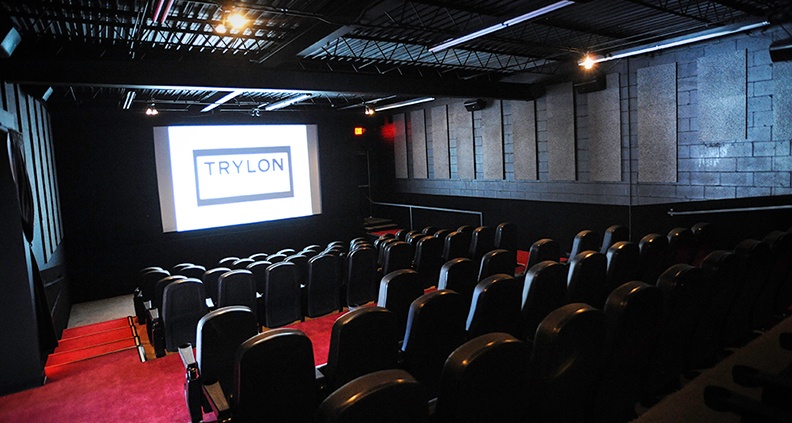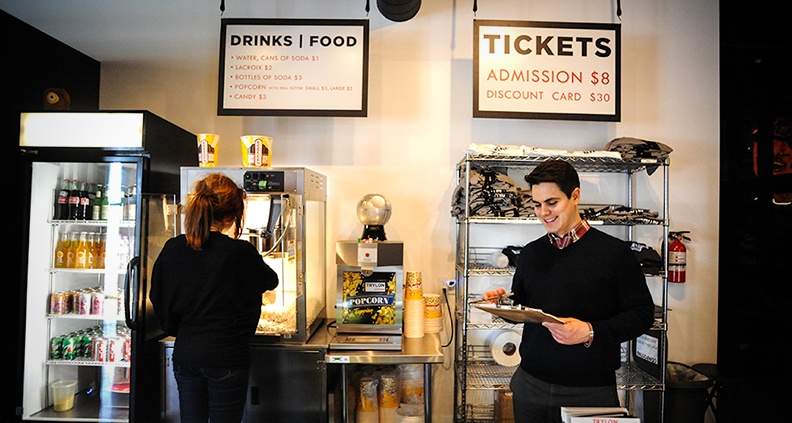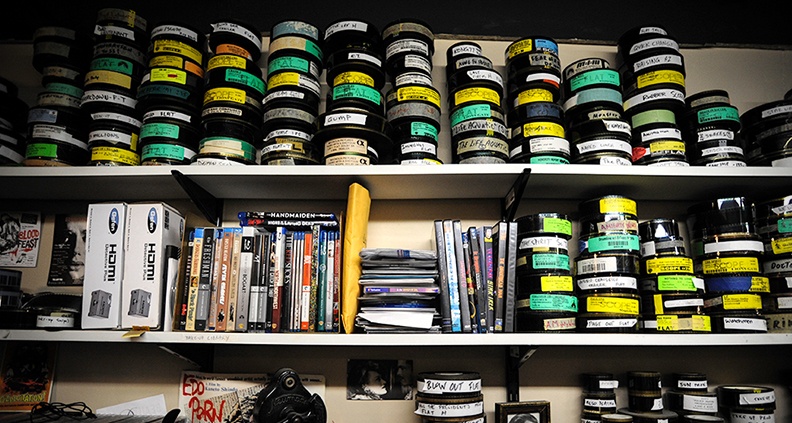Theater Crawl: Grabbing a Seat at Minneapolis Microcinema The Trylon
The bigger and more instantly name-recognizable of Minnesota’s two twin cities, Minneapolis has long been a key cultural mecca of the upper Midwest, boasting hometown heroes ranging from Prince to Peanuts creator Charles Schulz. The city (and environs) is a major player in the indie film world as well, producing marquee moviemakers including the Coen Bros., George Roy Hill and Terry Gilliam. It’s no surprise, then, that Minneapolis likewise supports a robust art house scene, with multiple theaters thriving and working in collaboration to provide movie-mad Minneapolitans with a wide range of viewing options.
One such venue is the 90-seat Trylon Cinema, located in Minneapolis’s Longfellow neighborhood. Focused on showcasing a diverse slate of reparatory titles, the Trylon is a project borne out of passion, community and low-interest credit cards—those theater seats aren’t cheap! Since opening its doors at its new permanent home in 2009, the Trylon has offers the unique opportunity to experience classic film on the big screen in an intimate setting.
We recently spoke to Trylon Cinemas executive director Barry Kryshka and programmer John Moret about the theater, Minneapolis’s local film scene, the importance of the communal experience and more. Here’s the conversation:
THE TRYLON CINEMA

Does the Trylon have a mission statement? If so, what is it?
Moret: We don’t have a stated mission statement, outside of being a repertory theater, though I believe underlying all of our programming is a central love for the art of cinema of all kinds. Our programming is always an attempt to carefully balance different aspects of film. Whether that means highlighting the best of classic Japanese cinema with a series on Ozu, documentary experimental films by Les Blank, new restorations of overlooked gems like Wanda or Between the Lines, or genre filmmaking with a double feature from Frank Henenlotter, we look to present films with as much care and thoughtfulness as we can. We value the history of film, by showing things on archival 35mm reel-to-reel and highlight the restoration process as much as possible with DCP screenings.
How long has the Trylon been in business?
Kryshka: We opened in 2009, but for a few years prior we hopped around town, trading scavenged cinema equipment to rent nights at other theaters. For our debut noir series—The Killing, Kiss Me Deadly, Gilda, Pickup on South Street and The Big Sleep—we swapped one slightly damaged screen and six used amplifiers [in order to use the theater].
Tell us, then, a little bit about your current space.
Kryshka: We share a commercial building with three other tenants. The Trylon Cinema was a 50x50x12 box when we got here in 2008, so we built everything— 8x20x8 projection booth, the raked upper seating and, in 2017, the “pit” for an additional four rows, along with a brand new lobby. We have 90 seats and two wheelchair spots. Our original configuration had 50 seats, purchased for $500. Which was big money for us at the time!

Tell us a little bit about the neighborhood or city that you’re in. What’s the local film scene like?
Moret: We’re located in the Longfellow neighborhood of Minneapolis, with the vibrant Lake Street to the North, and Minnehaha Falls and The Lock and Dam to the South. Longfellow is largely residential, but has a lot of great establishments, including some of the best bookstores and record stores in the city. Nearby is the Riverview Theater, which is a fantastic renovated 1950s art deco 2nd-run cinema—we work with them each year on our very successful Alfred Hitchcock Festival. Further north is another beautifully renovated 90-year-old cinema called the Heights Theater, with whom we also work with. The city also boasts some great film festivals and first-run art houses.
Does the Trylon do any sort of unique regular programming?
Moret: All of our regular programming is repertory. We do quarterly calendars that tend to focus on different directors, actors or themes. Right now we’re running a summer-long series of space films. We also work the Heights Theater to do an annual Film Noir series in February, a citywide annual Hitchcock Festival, a yearly screening of Hausu (1977) for Halloween and an all-night Horrorthon in the spring.
What programming choices have been unexpectedly successful? Or have there been films that you wish had done better?
Moret: I was pleasantly surprised by how well the film The Spook Who Sat by the Door (1973) did with audiences. I thought it might be a tough draw because its pretty unknown, but we had a nice audience for every show. My biggest disappointment, audience-wise, was our Warren Oates series. We played some great films like The Hired Hand (1971) and Bring Me the Head of Alfredo Garcia (1974), but audiences just didn’t show up for them.
What’s the Trylon’s approach to social media and marketing?
Moret: Our marketing budget only allows for the printing of our quarterly calendars and local artist-made posters. Each of those methods tends to draw lots of attention. Because of that, we push those two special aspects of what we do as best as we can through the usual social media methods.

What formats are you equipped to play? What sort of material do filmmakers need to provide to show their work in your theater?
Kryshka: 35mm reel-to-reel, on 2000′ reels only. We looked into 6000′ reel capability, and our tech shut me down with “a projectionist changing reels every 20 minutes is a projectionist who’s paying attention.”
Why do you think the communal theatrical experience is still important?
Moret: Communal screenings provide a completely unique experience that can’t be recreated at home. Whether it’s the actual projection of rare 35mm prints or new restorations of beloved classics, what the cinema experience draws on—for me—is a very specific focus on the film. At home, phones and other daily tasks distract me; my constant one is making another cup of coffee. In a dark room, the focus becomes completely about the film, providing different pace and emotional involvement that otherwise can be very difficult to find. The cinema is really the last remaining sanctuary from the over-saturation of constant digital distraction.
Past Theater Crawls include…
- Salt Lake Film Society (Salt Lake City, UT)
- The Iowa Theater (Winterset, IA)
- MKE Film (Milwaukee, WI)
- The Loft (Tucson, AZ)
- Park City Film (Park City, UT)
- The Frida Cinema (Santa Ana, CA)
To learn more about the Trylon—including what’s playing now and what’s coming soon—check out its website. Do you have a favorite local art house you’d like to see profiled? Leave your suggestions in the comments.
Learn how to become a Member of Film Independent by visiting our website. Be sure to follow us on Twitter, Facebook and Instagram and don’t forget to subscribe to Film Independent’s YouTube channel.
